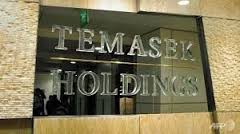 Bharti Airtel and Singapore Telecommunications (Singtel) have combined resources to form an Internet Protocol Virtual Private Network (IP VPN) to deliver high-speed, secure data network coverage to enterprise customers in Asia-Pacific, the Middle East, Africa, Europe and the US.
Bharti Airtel and Singapore Telecommunications (Singtel) have combined resources to form an Internet Protocol Virtual Private Network (IP VPN) to deliver high-speed, secure data network coverage to enterprise customers in Asia-Pacific, the Middle East, Africa, Europe and the US.
The combined network will provide data connectivity to 325 cities across the world through 370 Points of Presence (PoP). Together, Singtel’s 200 PoPs in 160 cities around the world and Airtel’s 170 plus PoPs in 165 cities across India, Africa and Middle East will form a new network that offers a connectivity backbone to enterprises across Asia, Europe, Africa and North America.
“This association will strongly enhance our value proposition for enterprise customers by offering them a wider global reach and the largest reach within India under a single platform. In particular, this will benefit companies in the pharmaceutical, IT and IT-enabled services as well as financial services segments, which are branching out to international locations rapidly,” Manish Prakash, director for strategic ventures at Bharti Airtel, said in a joint statement issued on Tuesday.
Under this global network, multinational corporations can maintain line of sight of their operations across different regions by using high-bandwidth business applications such as cloud applications, unified communications, video conferencing and software-defined networking solutions.
“By tapping on one another’s infrastructure assets, we enhance each other’s capabilities,” said Lim Seng Kong, Managing Director of Global Enterprise Business at Singtel Group Enterprise.
Source : http://economictimes.indiatimes.com/articleshow/52745963.cms

